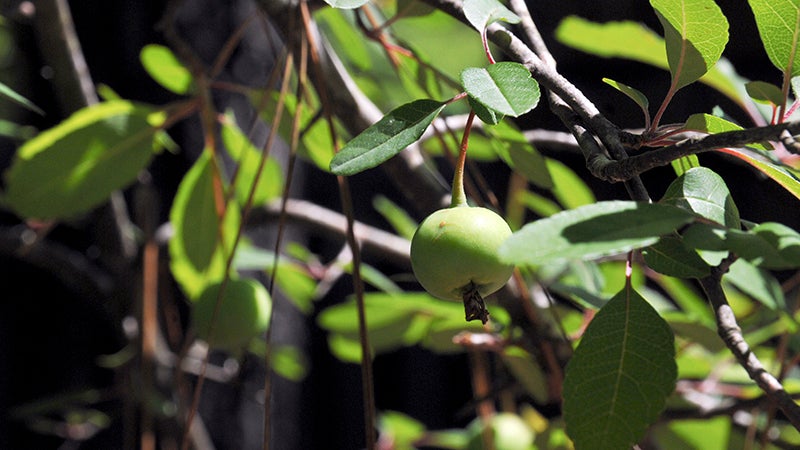Edible plants, hunt and handle them with care
Published 7:00 am Thursday, April 26, 2018

- IN THE BACKYARD: Crabapples, pictured, taste just like regular apples when ripe. With a little patience, they can be made into jelly and jam. Photo by Leah McEwen
From fruits, leafy greens, nuts, mushrooms, berries and herbs, there is a plethora of edible plants in Pearl River County.
Crosby Arboretum Director Pat Drackett said foraging is an art that recently regained popularity across the United States. She said now more than ever, countless resources are available to those who want to learn foraging techniques.
Drackett said there are several varieties of flowers and leafy plants in the area that are edible and easily accessible. For example, daylilies are found locally. The flowers can be eaten deep-fried, she said. Clover flowers are another edible flower common to the area, which are often found growing in massive patches or along the road. A third flower that can be eaten are violets, she said.
“Violets are edible – people put them in salads. You can put them in everything,” Drackett said.
Some cacti are also edible, such as the prickly pear. According to Chris Bennett’s book, Southeast Foraging, prickly pears are locally available cacti, which can be eaten by cutting the pads into chunks or strips and cooked. The pulp can be juiced and mixed into drinks and the seeds can be roasted and ground into flour, the book states.
At the Arboretum, huckleberries weigh down the bush’s limbs, ready to be eaten and small crabapples hang in trees waiting to ripen. Persimmons, wild grapes and custard apples will also all ripen in the next few months, Drackett said. She said while these plants can be found locally, they are sometimes hard to access, since the fruits are a prime food source for local wildlife.
“Animals beat you to them a lot of the time,” Drackett said.
Certain local plants can also be used to make tea. Pine needles, for instance, can be steeped and made into tea, Drackett said. Education Curator Jennifer Buchanan said yaupon contains naturally occurring caffeine and can be used for tea as well. The leaves and bark can be dried and steeped – leading to a rich tea high in caffeine, Buchanan said.
Some mushrooms are also edible, such as the locally common Chanterelle mushroom, or the Cantharellus cibarius. Owner/operator of local Shroomdom Inc. Leilani Rosenbaum, said when researching edible mushrooms it is important to look at the scientific name of mushrooms, since the common names vary by region.
While foraging can be a fun, healthy and worthwhile hobby, it is imperative to keep safety in mind. Rosenbaum said misidentifying plants and mushrooms can lead to serious and deadly consequences.
“When in doubt, always throw it out,” Rosenbaum said.
An article by the American Association of Poison Control Centers states, “Edible mushrooms and even berries can look very similar to toxic species.”
Doing extensive research and taking classes before foraging is the best way to avoid accidental poisoning.
Drackett recommends people join a local foraging group that educates others how to properly identify and confirm the plant species before consumption. She said she encourages people to take classes, get involved in native plant societies, go on fieldtrips and use social media and other platforms to find others who are interested in foraging.



